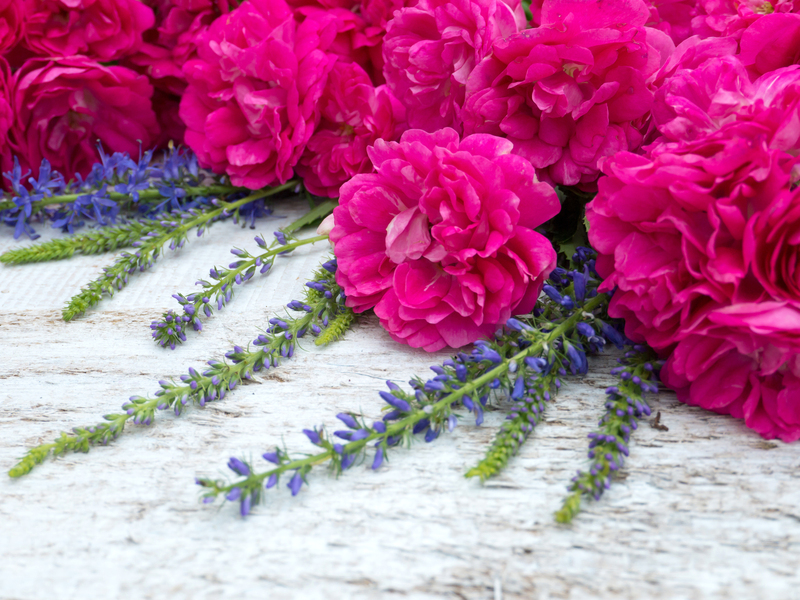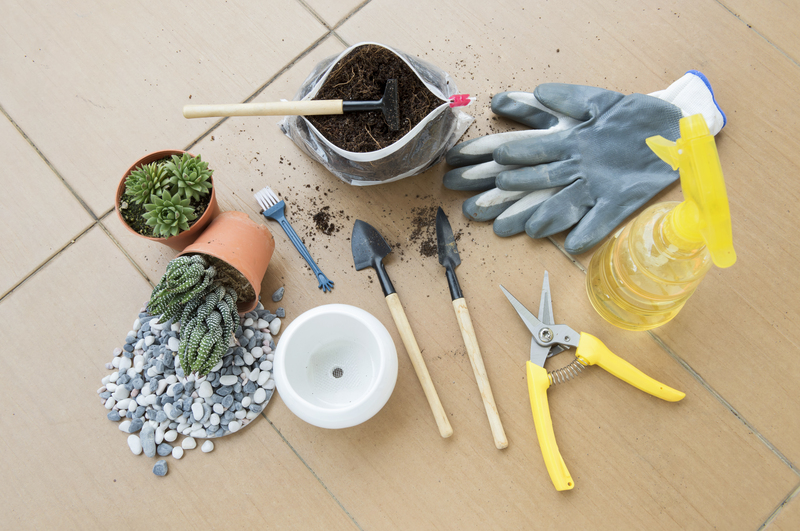Integrating Pet Needs into Your Garden Landscape
Posted on 14/06/2025
Integrating Pet Needs into Your Garden Landscape: The Essential Guide
A beautiful garden is a sanctuary for every member of your family--including your beloved pets. Integrating pet needs into your garden landscape not only ensures your furry friends' safety and happiness but also adds harmony and functionality to your outdoor space. Whether you're a seasoned gardener or just starting, learning how to plan a pet-friendly garden landscape is crucial for homes with pets. In this comprehensive guide, we'll walk you through the essential steps, creative ideas, and practical tips for designing a garden that caters to your pets' physical and behavioral needs while maintaining aesthetic appeal.
Why Integrate Pet Needs into Your Garden Design?
Pets, especially dogs and cats, love to explore the outdoors. However, conventional landscapes often overlook their requirements, potentially leading to garden damage or pet health issues. Integrating pet needs into your landscape design can result in:
- Safer outdoor environments by avoiding toxic plants and harmful materials
- Promoting healthy exercise and play for your pets
- Minimizing wear and tear on lawns and garden beds
- Carving out pet-specific zones that enhance your garden's structure
- Fostering a peaceful coexistence between plants and pets

Understanding Your Pet's Outdoor Behavior
Each pet is unique--some love digging, others enjoy chasing, and many like lounging in the sun. Integrating pet-friendly features into your landscape begins with observing and understanding your pet's habits and preferences.
Evaluate How Your Pet Uses the Garden
- Paths and Trails: Dogs often patrol boundaries or establish favorite routes. Cats may prefer elevated vantage points and hidden nooks.
- Digging and Playing: Does your pet dig in garden beds? A sandbox or digging zone might be the answer.
- Lounging Areas: Most pets appreciate sunny spots to bask or shaded zones to cool off.
By mapping your garden based on your pet's behavior, you can integrate pet needs into your landscape design successfully and meaningfully.
Pet-Safe Plants: What to Grow and What to Avoid
Many common ornamentals can be toxic to animals. To create a garden that is both gorgeous and pet-safe, consider these guidelines when selecting and integrating plants in a garden used by pets.
Pet-Friendly Plants to Consider
- Marigolds (Tagetes): Vibrant and non-toxic to pets. Great for borders.
- Sunflowers: Fun for pets and humans alike; safe and cheerful additions.
- Herbs: Parsley, thyme, sage, and rosemary are generally safe and fragrant.
- Camellias: Beautiful blooms and non-toxic.
- Bamboo: Hardy, fast-growing, and safe.
- Catnip and Cat Grass: Excellent choices for cats to nibble and enjoy.
Plants to Avoid in Pet-Friendly Gardens
- Lilies: Highly toxic, especially to cats.
- Foxgloves: Attractive but poisonous to both cats and dogs.
- Azaleas and Rhododendrons: Harmful if ingested.
- Daffodils and Tulips: Bulbs are especially dangerous for pets.
- Oleander and Yew: Extremely toxic--avoid at all costs.
When integrating pet requirements into your garden landscape, always refer to ASPCA's list of toxic and non-toxic plants for more information.
Designing Pet Zones in Your Garden Landscape
Great garden landscaping for pets includes specific zones tailored to their everyday needs. This doesn't mean sacrificing beauty! With clever planning, you can integrate pet zones beautifully in your overall garden style.
Essential Pet Zones to Consider
- Play Areas: Use durable, pet-safe grass or artificial turf to create a space for running and games.
- Digging Pit or Sandbox: Channel digging instincts into a designated area to protect flower beds and vegetable patches.
- Shaded Rest Stops: Install pergolas, trees, or doghouses to provide cool retreats during hot days.
- Pee Posts & Marking Zones: Encourage marking in specific spots with flagstones, posts, or even artificial turf patches, making yard maintenance easier.
- Pet Paths: Gravel, brick, or paw-friendly pavers guide your pets through the yard without trampling sensitive plantings.
Fencing and Boundaries
Fences and borders are essential elements when integrating pets into the garden landscape. A safe, enclosed space not only prevents escapes but can also keep unwanted wildlife out.
- Height: Choose materials and heights based on your pet's size and jumping abilities.
- Visibility: Some pets like to see beyond the fence. Mesh or lattice panels can provide security without blocking views.
- Double Gates: Offer an extra layer of escape prevention.
Creating a Sensory Garden for Pets
Sensory gardens aren't just for humans! Integrating sensory experiences for pets in your landscape keeps them mentally stimulated and happy.
Key Sensory Features for Pet-Friendly Gardens
- Scented Plants: Lavender, mint, and rosemary offer enticing, non-toxic fragrances.
- Textures: Soft grasses, smooth stones, and bark mulch create diverse tactile experiences.
- Water Features: Bubbling fountains or shallow ponds give pets a place to drink and play (ensure water sources are safe and easy to climb out of).
- Sounds: Wind chimes, rustling grasses, and gurgling water provide a soothing backdrop.
Pet Safety in the Garden Landscape
Safety should always be the first priority when designing a pet-friendly outdoor landscape. Potential hazards are everywhere, but a little foresight can go a long way.
Garden Dangers to Watch Out For
- Chemicals: Opt for organic pest and weed control methods. Many standard chemicals are harmful to pets.
- Pools & Water Features: Use fencing or netting around ponds and pools to prevent accidental falls.
- Compost & Mulch: Avoid cocoa mulch (toxic to dogs) and secure compost bins.
- Sharp Edges & Thorns: Steer clear of roses, barberry, and other spiky plants along common pet paths.
- Allergens: Some breeds are sensitive to pollen or certain plants--observe your pet's reaction during blooming seasons.
Low-Maintenance and Durable Materials for Pet-Friendly Landscaping
A yard that both you and your pets enjoy should be easy to care for and stand up to play. By choosing practical materials specifically for pet landscapes, you'll create a stress-free zone for everyone.
Recommended Surfaces for Pets
- Artificial Turf: Soft, hard-wearing, and easy to clean. Great for high-traffic pet zones.
- Gravel: Use smooth pea gravel in pathways, which won't hurt paws.
- Bark Mulch: Provides a soft surface for digging and lounging; avoid cocoa mulch due to toxicity.
- Paving Stones: Durable, cool underfoot, and prevents muddy paws indoors.
Innovative Ideas for Integrating Pet Needs into Your Garden Landscape
Looking to take your pet-friendly landscape to the next level? Here are some creative projects to inspire your design:
- Catios and Cat Walkways: Safe, enclosed patios or elevated walkways let cats experience the outdoors without risk.
- Dog Splash Pads: Install shallow, non-slip pads or misters for hot days.
- Puzzle Feeders and Foraging Corners: Promote mental stimulation by hiding treats around the yard.
- Window Perches and Lookout Platforms: Give curious pets a view of the world with strategically placed shelves or benches.
- Wildlife-Friendly Features: Bird feeders and bee hotels entertain pets while supporting local biodiversity (place these carefully to avoid conflict between pets and wildlife).
Maintaining Harmony: Training and Garden Upkeep
Even the best pet-friendly garden requires ongoing attention. Training your pets to respect boundaries and using proper garden maintenance techniques will keep your landscape and animals happy over the long term.
Tips for Training Pets in the Garden
- Positive Reinforcement: Reward pets for using designated zones and following paths.
- Discourage Digging: Redirect digging to special pits or use buried chicken wire under plant beds.
- Boundary Marking: Use decorative stones or logs to signal off-limit areas.
Strategies for Landscape Maintenance
- Spot-Repair Lawns: Use patch kits for worn grass zones or switch to more durable ground covers.
- Clean Water Sources: Keep fountains, ponds, and bowls algae-free and regularly replenished.
- Monitor Plant Health: Remove any plants that become unhealthy or susceptible to pet browsing.

Balancing Style and Functionality
With thoughtful planning, integrating pet needs into your garden design enhances not just safety, but the overall vibe and value of your landscape. Use natural elements, focal points, and repeating patterns to blend functional pet features with your aesthetic vision.
- Curved Lines: Follow established pet trails with winding paths for a soft, inviting look.
- Layered Planting: Combine low, medium, and tall plants to create pet hideaways and visual interest.
- Color Coordination: Let toys, pet furniture, or even collars coordinate with plant hues for a playful touch.
Conclusion: A Happier Home for All
Integrating pet needs into your garden landscape is about creating a space where plants, people, and pets thrive together. From safe plant choices and innovative zones to durable materials and ongoing care, every detail contributes to the joy and serenity of your shared outdoor retreat. With these tips, your garden will become a true sanctuary for your whole family--four-legged members included!
Further Resources
- ASPCA Guide to Toxic and Non-Toxic Plants
- RHS: Creating a Dog-Friendly Garden
- Gardeners' World: Pet-Safe Plants for Gardens
Start planning your pet-friendly garden landscape today, and let your backyard become a paradise for everyone!

